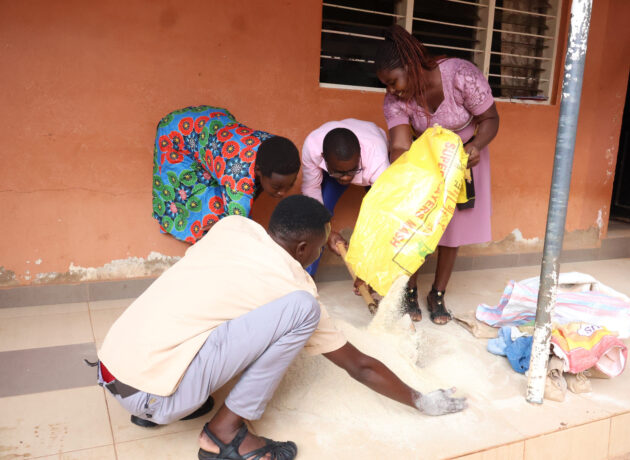
Project Draws Young Farmers to Profitable Poultry Farming » Capital News
NAIROBI, Kenya May 23 -Two international organisations have escalated efforts to roll out improved agriculture projects targeting the youth in mainly semi-arid regions to help them turn farming into profitable self-employment.
Africa Harvest and ICRISAT, in partnership with Mastercard Foundation have been taking advantage of the long rains season to intensify implementation of a project named Drought Tolerant Crops (DTC) for Youth Jobs Creation, in dry regions of at least ten counties, training youths in rural areas on methods of making profits from farming.
The DTC for Youth Job Creation project spans several semi-arid regions, including Taita Taveta, Homabay, Siaya, Busia, Elgeyo Marakwet, Makueni, Machakos, Kitui, Meru, and Tharaka Nithi, with a target to reach over 120,000 young people.
The project focuses on eight crop value chains that research has proved turn in profits in the short term.
Common crops in the focus regions are sorghum, finger millet, pearl millet, green grams, pigeon peas, groundnuts, and poultry and fish. The latter two benefit from feed formulated through the DTC crops.
Speaking from field training stations in Taita Taveta County, Damaris Kagwiria, the Project Coordinator from Africa Harvest, said the main focus of the project is to draw in young people to engage in farming by mentoring them on how to make profits through the value chain of either crops, poultry or fish.
The project capitalises on what produce does well in different areas.
In Taita Taveta County, hundreds of young farmers have been undergoing training in profitable poultry production. They are taught how to grow the DTC crops and use part of their produce to formulate their own home-made feed.
Participants taking part in field training told Capital News many of them had quit low paying employment or casual jobs to engage in poultry farming, for which they have been taught profit from a value chain that covers from egg, chicks, to market, including utilisation of feathers, bones, manure and making their own feed and selling poultry farm implements.
Kagwiria said: “The poultry value chain pivots very well with the DTC crops to reduce the cost of production through feed formulation from these crops that we are promoting through the project.”
She further adds that “poultry rearing provides a sustainable source of income as improved kienyeji chicken can survive even in harsh weather conditions in the face of climate change.”
With the entry point being feed formulation, the project supports youth groups with starter packs as an incentive, enticing them to strive to keep 1,000 birds each.
In Taita Taveta County that is over 80 percent semi-arid, Kagwiria says the project also links the young farmers in poultry production to the source of inputs and market.
A case study during the training was Steven Paul, a 29-year-old public health officer from Challa-Njukini Ward in Taita Taveta County, who quit his health inspector’s job to seek greater fulfillment in raising chickens.
He is one of scores of Trainers of Trainers (ToTs) who are stakeholders of the Africa Harvest/ICIRISAT project in the county.
Paul said, ”This initiative is good for young people as it focuses on semi-arid regions and aims to equip young people between the ages to 18-35 with the skills needed for profitable agriculture.”
Benson Mutua, also a trainer for Africa Harvest, who runs one of the biggest chicken slaughter houses at Kilala, Makueni County, says over 3,000 poultry farmers from as far as Kilifi, Kwale and Mombasa have become regular suppliers of chicken for his meat depot.
He trains the new young farmers how to cut the cost of feed by converting crops into home-made feed.
